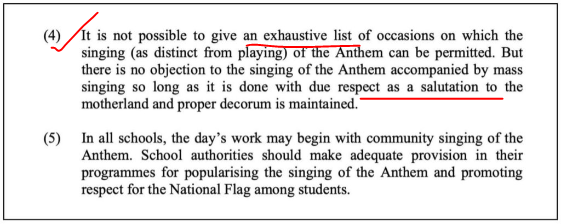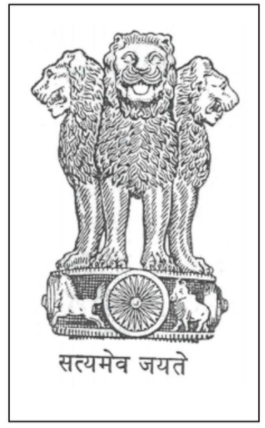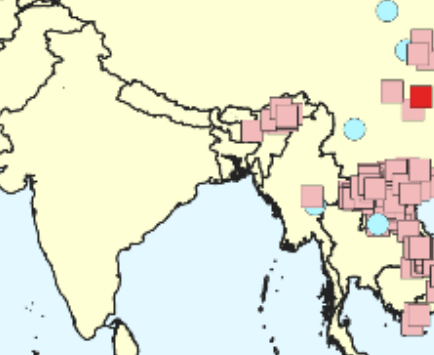Goaltide Daily Current Affairs 2020
Current Affair 1:
Is It Constitutional to Declare Wild Animals to Be ‘Vermin’?
Farmers in particular lose their livelihoods, standing crops – when stray animals trample them. So, state governments have sent several requests over the years to the Centre to declare certain species as ‘vermin’, so that they may be hunted and killed without consequence.
We will see here certain legal and constitutional provisions regarding protection of wildlife. So many Prelims based question you can get from this Article. So, read carefully.
The Wildlife (Protection) Act 1972 does not define the term ‘vermin’. However, its Schedule V contains a list of animals designated ‘vermin’, including rats, crows and foxes.
Section 62 of the Act empowers the Centre to declare wild animals of any species as ‘vermin’ in any area and for a specified period of time. These animals are deemed to be included in Schedule V, opening them up to be hunted.

However, many experts have argued against such mass-culling because it is ineffective and does not resolve the human-animal conflicts. Against this background, it’s worth noting that the constitutionality of Section 62 of the Act is also suspect for three reasons:
- It violates Article 14 of the Constitution
- It violates Article 21 of the Constitution
- A combined reading of the Directive Principles of State Policy (DPSPs) and the fundamental duties require the state to be cautious when enacting laws that affect wildlife
Article 14
Article 14 of the Indian Constitution secures equality and equal protection before the law. One of the tests to determine compliance with Article 14 is called manifest arbitrariness. A law suffers from arbitrariness when it is ‘excessive’ and ‘capricious’ or suffers from the lack of an ‘adequate determining principle’. The wording of Section 62, which allows the Centre to declare any wild animal to be ‘vermin’, apart from those listed in the Act’s Schedule I and part II of Schedule II, itself doesn’t disclose a determining principle, leave alone an adequate one.
- Notifications issued by the Union environment ministry suggest there are no specific principles the Centre uses to determine whether a particular species can be declared ‘vermin’.
- The notifications only mention that the animals have become a threat to property, life and crops. The decision rests heavily on the state governments’ requests.
- In the past, states have requested the Centre to declare certain animals as ‘vermin’ without providing any detailed accounts or estimates of the destruction caused by those animals.
- The Centre issues these notifications on the basis of the state governments’ requests – poorly researched or not.
- So, this provision suffers from ‘manifest arbitrariness’ both in how it is worded and how it is implemented.
Article 21
In its controversial decision in Animal Welfare Board of India v. A. Nagaraja (2014), the Supreme Court extended the right to life under Article 21 of the Constitution to animals. This opinion understandably drew flak from lawyers and constitutional experts, but high courts around the country have cited it and expanded on it. For example, the Uttarakhand high court in 2018 and the Punjab and Haryana high court in 2019 declared all the members of the animal kingdom to be legal entities, with distinct legal personalities and with rights akin to those of a living person.
- This expansion of Article 21 also means the same safeguards that apply to humans – including the right to not be deprived of life or personal liberty except according to just, fair and reasonable procedures – also applies to animals.
- There are no procedural guidelines on how and in what situations Section 62 can be exercised. As a result, the government has an unfettered discretion in deciding which animals deserve to be designated ‘vermin’.
What the DPSPs and fundamental duties say:
The first mention of wildlife in the Indian Constitution is in Article 48A, a part of the DPSPs. It states that the state shall endeavour to protect and improve the environment and to safeguard forests and wildlife.
Article 51A(g) under the fundamental duties also makes it the duty of every citizen “to protect and improve the natural environment including forests, lakes, rivers and wildlife, and to have compassion for living creatures.”
- In Sachidanand Pandey v. State of West Bengal (1987), the Supreme Court held that whenever an ecological issue is brought before the court, the justices have to bear in mind Articles 48A and 51A(g).
- The bench in that case also said that when the court is called upon to give effect to the DPSPs and fundamental duties, the least it can do is make sure it bears appropriate considerations in mind and excludes irrelevant information. However, the government often ignores ‘appropriate considerations’ and factors extraneous factors like public pressure into its decisions about declaring this or that species to be ‘vermin’.
Where do we go from here?
- Specifically, lawmakers should delete Section 62 of the Wildlife (Protection) Act 1972 such that they don’t use their discretion to declare any animal as vermin and allow culling.
- Perhaps they as well as the courts can draw inspiration from Section 11(1)(b) of the Act, which allows the chief wildlife warden or an authorized officer to permit the hunting of an animal that has become dangerous to human life or property (including crops). It thus raises the threshold for determining whether an animal can be hunted as well as restricts the hunting to only those specific animals or groups of animals.

We can conclude that in its current form, Section 62 fails to distinguish between individuals that are directly responsible for the destruction of crops and others of the same species. It also suffers from several legal infirmities, primarily vis-à-vis Articles 14 and 21. Our constitutional framework envisions a harmonious relationship between humans and the rest of the ecosystem. The section threatens this fragile relationship and challenges our fundamental human values of compassion, empathy and respect for other life forms.
Current Affair 2:
Universal Ratification to Child Labour Convention

Recently, International Labour Organization (ILO)’s convention on Worst Forms of Child Labour also known as Convention No. 182 received universal ratification after the Kingdom of Tonga ratified the same. It means ratification by all the members of an organisation. Convention No. 182 has received ratification from all the 187 members of ILO.

The ILO estimates that there are 152 million children in child labour, 73 million of whom are in hazardous work. Seventy per cent of all child labour takes place in agriculture and is mostly related to poverty and parents’ difficulties finding decent work.
Convention No. 182 calls for the prohibition and elimination of the worst forms of child labour, including slavery, forced labour and trafficking. It prohibits the use of children in armed conflict, prostitution, pornography and illicit activities such as drug trafficking, and in hazardous work.
It is one of the ILO’s eight Fundamental Conventions. These cover the abolition of child labour, the elimination of forced labour, the abolition of work-related discrimination and the rights to freedom of association and collective bargaining.

See below, which of the above 8 India has ratified (check Convention Number to see).

Current Affair 3:
Understand Everything about the National Flag, Anthem & Emblem
India, being home to a largely diverse demography, language & culture, is united with the national symbols which are intrinsic and unique to India.
The National Flag
The present National Flag of India was adopted by Constituent Assembly on 22 July 1947. Display of the flag must be in compliance with the Flag Code of India, 2002.
The flag should be made of hand-spun and hand-woven Wool/Cotton/Silk Khadi bunting in the prescribed dimensions.


Some basics about National Flag: They will not ask in exam. Just read once.
- The flag should not be used for commercial purposes and also must not be used as a portion in any kind of garment or cloth or decoration.
- Also, nothing is allowed to be inscribed on the flag.
- It should not be used to hold any item or as a cloth to wrap things except for flowers prior to unfurling.
- When the flag is hoisted/lowered or being carried in a parade, everyone has to stand in attention facing the flag.
- The flag should always be kept in the upright position with saffron at the top.
- The flag should be distinctly placed and flown from sunrise to sunset.
- No other flag should be placed above or higher than or side by side to the National Flag.
- The flag will be half-masted only in the event of death of dignitaries as mentioned in the Flag Code of India.
The National Anthem
Composed by Rabindranath Tagore, rendition of the full version of the National Anthem takes about 52 seconds.
The MHA in its orders mentioned that it is not possible to give an exhaustive list of occasions on which the singing of the Anthem is permitted. However, it made clear that there is no objection to the singing of the Anthem accompanied by mass singing so long as it is done with due respect as a salutation to the motherland and proper decorum is maintained.

The Supreme Court in its order in 2018 stated that it is not mandatory to play the anthem prior to screening feature films in cinema halls modifying its 2016 order.

Any act of disrespect to the National Flag or Anthem is a punishable offence by law
As per the Prevention of Insults to National Honour Act, any person who intentionally prevents the singing of anthem or causes disturbance to any assembly singing the anthem is liable to be punished with imprisonment of up to three years or a penalty or both. The same punishment is applicable to those who disrespect the National Flag or Constitution of India.

The State Emblem of India

The State Emblem of India is adapted from the Sarnath Lion Capital of Amarnath. In the State Emblem, three lions on an abacus with the Dharma Chakra in the Centre, a bull on the right and a galloping horse to the left is clearly visible. The outlines of two Dharma Chakras on either end of the abacus are also seen. The motto ‘Satyameva Jayate’ in Devanagari script at the bottom is also a part of the emblem and translates to ‘Truth alone Triumphs’.
The State Emblem of India (Prohibition of Improper Use) Act, 2005 regulates the usage of the National Symbol. According to the Act, no one is allowed to use the symbol to mislead people into thinking that it relates to the government. Apart from not permitting the usage of the emblem for commercial purposes, the act also prohibits the usage of the symbol by people for trademark or patent. Violating this law would result in imprisonment up to two years or fine up to Rs. 5000 or both.
Current Affair 4:
African Swine Flu
News:
African swine fever (ASF) has spread to Meghalaya; more than 17,000 pigs have died due to the highly contagious disease in adjoining Assam.


Background:
Since February this year, ASF has killed at least 17,000 domesticated pigs in Assam and an unspecified number in Arunachal Pradesh. The disease is believed to have been transmitted from China where it has resulted in the death of several animals in 2019.
What’s the concern?
Piggery is a major source livelihood in the northeast because of the high demand for pork. Assam alone has seven lakh pig farmers engaged in the business, worth at least ?8,000 crore annually.
About African Swine Fever (ASF):
ASF is not a risk to human health.
Current Affair 5:
Naval Innovation and Indigenization Organisation (NIIO) launched
Remember Ministry, why it was set up and structure. Very small information is available now about this Organization.
The NIIO puts in place dedicated structures for the end users to interact with academia and industry towards fostering innovation and indigenization for self-reliance in defence in keeping with the vision of Atmanirbhar Bharat.
The NIIO is a three-tiered organisation.
- Naval Technology Acceleration Council (N-TAC) will bring together the twin aspects of innovation and indigenization and provide apex level directives.
- A working group under the N-TAC will implement the projects.
- A Technology Development Acceleration Cell (TDAC) has also been created for induction of emerging disruptive technology in an accelerated time frame.
The Draft Defence Acquisition Policy 2020 (DAP 20) envisages Service Headquarters establishing an Innovation & Indigenisation Organisation within existing resources.
<< Previous Next >>


